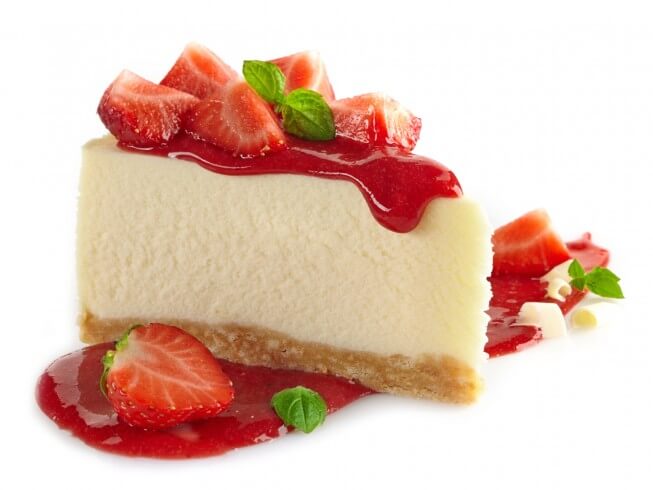In a cooking rut? Try one of these taste-tested, family-approved recipes using ground beef.

The original, never-fail, always-a-hit cheesecake.

Crust
1 cup graham cracker crumbs
3 tablespoons butter or margarine, melted
Filling
24 ounces cream cheese, softened
3/4 cup sugar
5 tablespoons lemon juice
1 1/2 teaspoon grated lemon peel
1 teaspoon vanilla extract
3 eggs, separated
Preheat the oven to 325 degrees F.
Combine the graham cracker crumbs and melted butter in bowl. Mix until the crumbs are moist. Press the graham cracker crumb mixture onto the bottom of a 9-inch springform pan. Place the pan in the oven and bake at 325 degrees F for 10 minutes. Remove the crust from the oven and let the pan cool on a wire rack.
Reduce the oven temperature to 300 degrees F.
Combine the cream cheese, sugar, lemon juice, lemon peel, and vanilla extract in a mixing bowl. Beat on medium speed with an electric mixer until light and blended. With the mixer running, add the egg yolks, one at a time, beating well after each addition.
In another mixing bowl, beat the egg whites (use a rotary beater or mixer with clean beaters) until stiff peaks form.
Fold the whipped egg whites into the cream cheese filling. Transfer the cheesecake filling to the crust and spread the filling evenly over the bottom of the springform pan.
Place the cheesecake in the oven and bake at 300 degrees F for 45 minutes. Remove the cheesecake from the oven and let cool for 10 minutes. Gently run a knife around the rim of the pan to loosen the cheesecake. Let the cheesecake cool completely then place the cheesecake in the refrigerator to chill for 2-3 hours. Remove the sides of the springform pan once the cheesecake has cooled.
Garnish the Philly cheesecake as desired with fruit, pie filling, sweet sauces, etc. Store leftovers in a covered container in the refrigerator.
For a smoother cheesecake, make sure all ingredients, especially the cream cheese, are at room temperature before mixing.
To prevent cracks, avoid overmixing the batter, especially after adding the eggs.
Place a pan of water in the oven while baking to add moisture and help prevent the cheesecake from cracking.
Cool the cheesecake slowly in the oven with the door slightly open after turning it off to minimize temperature shock and cracking.
For an extra creamy texture, add a tablespoon of sour cream or heavy cream to the filling.
If you're looking for a tangier flavor, increase the amount of lemon juice or add a bit of lime zest.
Customize your cheesecake with various toppings like fresh berries, chocolate ganache, or caramel sauce for added flavor.
For a cleaner slice, dip your knife in hot water and wipe it dry between cuts.
Make a water bath for the cheesecake by wrapping the bottom of the springform pan in foil and placing it in a larger pan filled with hot water. This helps bake the cheesecake evenly and prevents cracks.
Baking the crust before adding the filling helps to set and crisp it up, preventing it from becoming soggy when the filling is added.
Cooling the crust helps it sets properly and helps maintain its integrity when the filling is added, preventing it from mixing with the crust or becoming soggy.
Yes, you can use different types of crumbs such as biscuit crumbs, Oreo crumbs, or even almond flour for a gluten-free option. The texture and flavor will vary slightly.
The oven temperature is reduced to gently cook the cheesecake filling, making sure it sets without overcooking or cracking.
Separating the eggs and beating the whites until stiff peaks form before folding them into the filling introduces air, making the cheesecake lighter and fluffier.
It's best to use block cream cheese for its firmer texture and consistency, which results in a smoother and denser cheesecake. Whipped cream cheese may alter the texture and stability of the cheesecake.
The cheesecake is done when the edges are set but the center still jiggles slightly when gently shaken. It will continue to set as it cools.
Running a knife around the rim of the pan helps to release the cheesecake from the sides, preventing cracks as it cools and contracts.
The cheesecake should chill in the refrigerator for at least 2-3 hours, but overnight is best to make sure it's fully set and easier to cut.
Yes, you can freeze the cheesecake. Wrap it tightly in plastic wrap and then in aluminum foil. It can be frozen for up to 3 months. Thaw in the refrigerator overnight before serving.
In a cooking rut? Try one of these taste-tested, family-approved recipes using ground beef.
Love buffalo wings? Get that same hot, zippy flavor in everything from deviled eggs to enchiladas. And of course: wings.
If you're a fan of the menu at this American chain of restaurants which serves a variety of foods such as burgers, steaks, pasta, and seafood then you'll love this collection of copycat recipes.

Online since 1995, CDKitchen has grown into a large collection of delicious recipes created by home cooks and professional chefs from around the world. We are all about tasty treats, good eats, and fun food. Join our community of 200K+ members - browse for a recipe, submit your own, add a review, or upload a recipe photo.

reviews & comments
September 15, 2020
I make a lot of Cheesecake but I'm going to stop here. This is buy far the best - so light, so good.
June 21, 2012
This is my great grandmother's recipe. It is delicious!